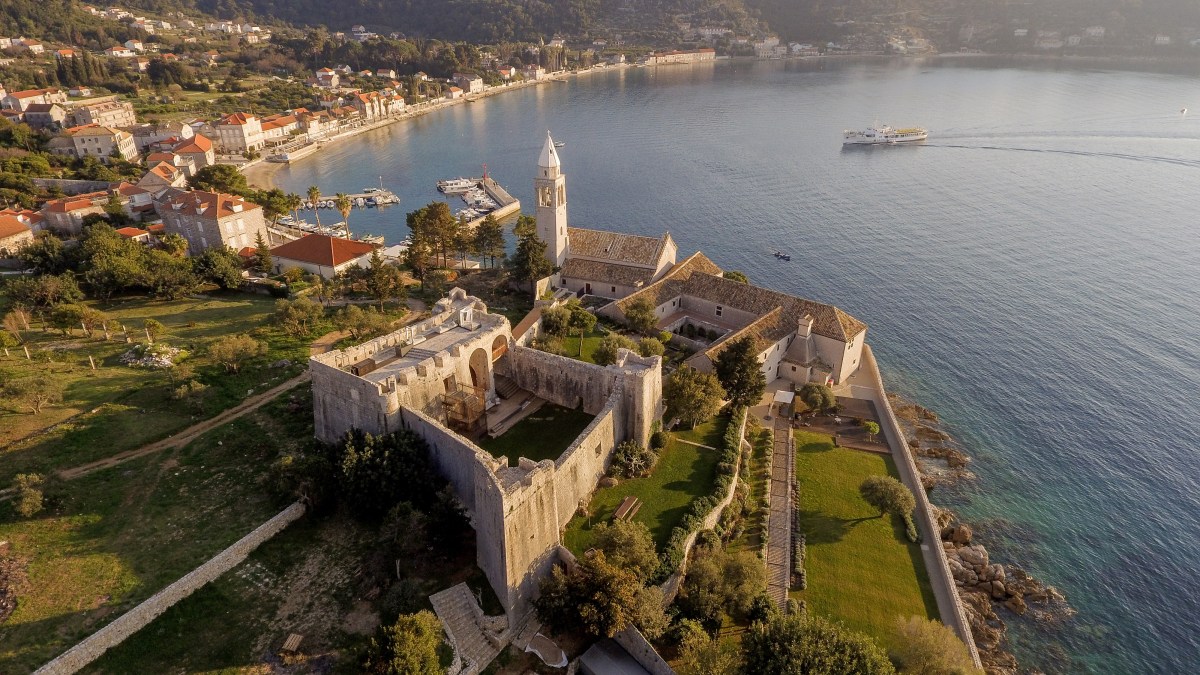Melinda Stevens, the former Condé Nast Traveller editor who has been a guest at the most beautiful private houses on the planet, has at her fingertips the details of some of the most incredible places to stay, which she generously shares in a new book. Plus, tips on how to calculate your carbon and a new apartment company that will help you to live like a Parisian during the Olympics.
This article contains affiliate links that can earn us revenue
A book of dreams

Villa Palladio in Jaipur, owned by the Italian-Swiss entrepreneur Barbara Miolini, appears in Secret Stays
Every now and then a book lands on my desk that makes me dream. Secret Stays is one of them. Written by Melinda Stevens, the author of Chic Stays and former editor-in-chief of Condé Nast Traveller UK and US, it is a glossy directory of 22 of some of the most glorious houses around the world in which to holiday. As you might expect from this guide — possibly the poshest Airbnb-style directory in existence — many of its owners are as grand as their piles, from the Duke and Duchess of Devonshire and the aristocratic Bolza family in Italy to Francesca Thyssen-Bornemisza, whose property, a converted monastery in Croatia, is decked out in antique family furniture alongside rare contemporary art. Nearly all of the entries are historic homes, and their walls have stories to tell of previous inhabitants, from Mick Jagger and Princess Margaret at Villa Cetinale in Tuscany to a donkey that came with a farmhouse in South Africa. Rather wonderfully, each of the properties is totally different from the others. There’s a multicoloured artist’s house in Mexico, a stone castle in Yorkshire, a villa with a pink-striped pool house in India, a tiny little machiya townhouse in Kyoto with rice-paper walls — and even a wooden village in Transylvania. So if you have the means and the time, you could go on holiday, moving from one to the other and never have to think of booking a hotel ever again. You would also hear some incredible tales — which, apparently, the owners enjoy sharing. As Stevens says, after the pandemic many of them want “to take strangers in, to shelter them from the storm, to exchange stories of different lands, to break bread, to offer rest”. Which suits those of us who like nothing more than to nosey about other people’s spaces, particularly gorgeous ones such as these.
Secret Stays is published this month by Assouline, assouline.com
The carbon calculators

A hiking holiday in Scotland, for example near Loch Lomond, is a great option for a more eco-friendly break
GETTY IMAGES
We all know that flying emits huge amounts of carbon — which in turn heats our planet. But not many of us know exactly how much. Ecollective aims to change that by helping travel agents and tour operators calculate the carbon costs of each of the trips they offer, so travellers can plan their holidays with carbon facts at their fingertips. A 14-day cruise to the Antarctic, for instance, would emit about 30 tonnes of CO₂ for a family of four — enough to melt 3.3km of sea ice, Ecollective estimates. Whereas a walking holiday in Scotland, with trains from and back to London (the point at which all calculations are made, given that the company is based in the capital), would emit just 0.4 tonnes of CO₂. To meet the climate targets set out in the Paris agreement, the company reminds us, we each need to get our personal footprint to under two tonnes a year by 2050 — which means substantially altering how we travel. That might involve staying in a hotel that has reduced its footprint, buying more locally, heating and cooling with green energy, or choosing fuel-efficient transportation. Or it could mean looking at each of the component parts of a trip and the carbon generated on it, and reconfiguring the journey to make it less carbon-heavy. The adventure travel expert Explore has now calculated the carbon amounts for over 500 of its trips and can advise on how to alter each one to make it more eco-friendly. ecollectivecarbon.com
Right at home in Paris

A Highstay apartment on Rue Galilée in the 8th arrondissement
Those who are thinking about going to the Paris Olympics but are unable to find a hotel room might want to look at Highstay. The new company has a portfolio of more than 30 smart, interior-designed apartments in four of the most popular areas of the city — Champs-Elysées, Saint-Honoré, Louvre-Rivoli and Le Marais — all available for short-term rental (one night during the week and two at weekends). Unlike most apartments these come with the services of a 24/7 concierge, who can help with basics such as restaurant bookings and transfers or arrange glamorous experiences, from a perfume masterclass at Guerlain and a lesson with a pâtissier to a visit to Galerie Dior before (and after) it opens to the public (€3,800 for two; extra charge for up to six people). All of the light, bright apartments, characterised by white walls and slick contemporary furniture, come with high-end extras — a Nespresso Krups coffee machine, Sonos audio system, yoga mats, Aesop toiletries — as well as baby beds and high chairs on request. Prices range from €500 a night for a studio to €1,400 a night for an elegant two-bedroom historic apartment just across from the Louvre. highstay.com










